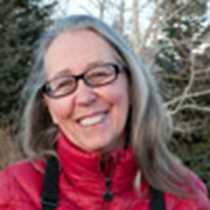Misty and warm morning breezes greeted us this day. We sailed into Elsehul Inlet finding the place teeming with wildlife. From the extensive kelp beds to the ubiquitous fur seals, Elsehul was on the move. Southern giant petrels soared in the sky with black-browed albatross, grey-headed albatross and the harder to spot, light-mantled albatross. The high cliffs of tussock grass were dotted with the nests of these great soaring birds. King penguins stood on shore in groups of about 50 to 100 birds. Some were statuesque, in full molting stage, while others seemed to be going through their normal range of activity.
Then there were the fur seals. From the moment we entered Elsehul, the calls of the fur seals reverberated off the vertical cliffs. Pups called for their returning moms to feed them while the moms called out to locate their pup. There were thousands of them. The hills were mudslides with tussocks. Most of the dry spots were claimed by fur seals. The ground, itself, seemed to growl at us as we took to the high ground for some spectacular over views of Elsehul. Zodiac tours were treated to a lower perspective of the goings on in this lively place, with macaroni penguins standing at the very edge of the splash zone.
Our afternoon took us to Prion Island. Today is the first day that people are allowed to step foot on Prion Island for this season. Mating season for Antarctic fur seals is just ending, so males are less aggressive males and the fur seals calmer. The island’s beaches and hills are covered in fur seals. The pups on the beach outnumbered all other age groups. We had to encourage a few of them to leave the boardwalk so that we could go up the hill to see the largest bird of flight, the wandering albatross.
Above the ruckus on the beach, the albatrosses build their mud and grass nests. Here, under the snow white feathers of their parents, lie the future world travelers. These magnificent birds circumnavigate the Antarctic continent. We were able to see them close-up in nurturing poses on their nests.
During the evening recap, Rich Kirchner explained the natural history of these birds and time ran out before questions did. So full was the interest and excitement of our day.







